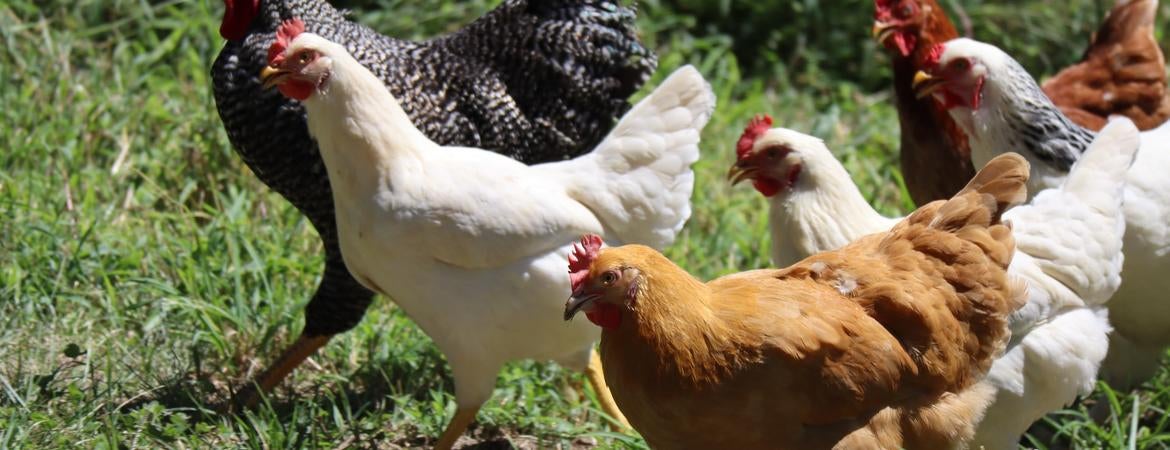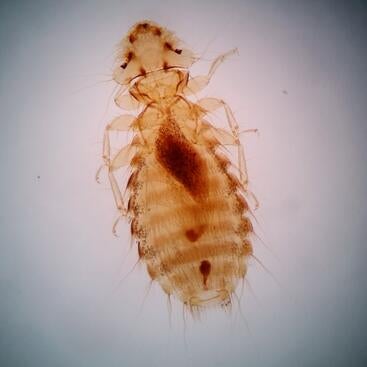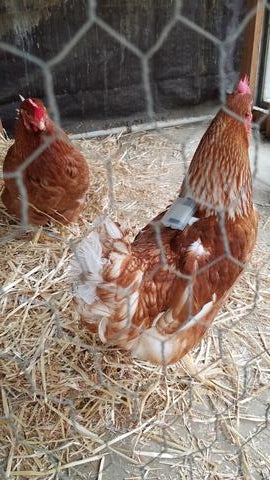
Lice have been found feeding on the skin and blood of free-range chickens, which are infected at much higher rates than caged flocks. This finding could have implications for states like California, where all egg production is cage-free.
Previously, lice were not known to be significant poultry pests. However, a UC Riverside study published in the journal Parasites & Vectors shows for the first time that they are.
“We didn’t expect to find skin lesions associated with chicken body lice, but we did. This has not, to my knowledge, been documented before,” said UCR entomologist and lead study author Amy Murillo.
Murillo studies pests of poultry and other livestock. To help detect mite infestations in chickens, Murillo previously led a team of entomologists, computer scientists, and poultry scientists in creating a new insect detection sensor. These sensors, worn on the birds’ backs, have been dubbed “Fitbits for chickens.”
The Fitbits translate the birds’ behaviors into algorithms that can be recognized by computers. For this study, the sensors were used to monitor activity at three points in time — during a period where cage-free chickens were not infested with lice, during a growing infestation, and during a full-blown infestation.
The clearest signal of a lice infestation was an increase in preening behaviors, as the birds clean their feathers with their beaks. While preening is generally considered positive, too much of it could disrupt other healthy chicken behaviors.
“We found such a significant increase in infected flocks it makes us think they’re spending time preening when they might have been doing other things, like resting, eating, sleeping, or laying eggs,” Murillo said.
A major increase in preening was detected even when the lice infestation was relatively small. “Just a few lice and you see a dramatic change in what the chicken is doing,” Murillo said. “I don’t know if you can measure itchiness or irritation, but they’re spending significant amounts of time trying to get the lice off.”
Lice tend to live in places on the body, both in humans and in chickens, that make it harder for hosts to remove them. Chicken body lice tend to go under the wings, a place with a warmer than average skin temperature that is harder for birds to reach. The lesions the researchers found there were actively bleeding.
At this time, there are not many strategies for mitigating chicken lice. Few insecticides are allowed to be used on poultry, and it is difficult to apply pesticides to cage-free birds. However, Murillo and her colleagues have gotten promising results with food-grade diatomaceous earth, a powdery substance made from the fossilized remains of aquatic organisms.
“When chickens get it into their feathers, it disrupts the waxy exoskeleton of the lice,” Murillo said. “In other words, the diatomaceous earth makes it so the insects can’t prevent water loss. Then they dry out and die.”
Given the possibility that excessive preening may interfere with egg laying, Murillo would like to conduct a follow-up study. “Lice were not previously looked at as serious pests. Now that there’s evidence the lice impact the birds, I’d like to measure the economic impact of infestations,” she said.
California’s Proposition 12, passed by voters in 2018, bans the sale of eggs from hens kept in cages. The law aims to reduce animal suffering by setting minimum space requirements for farm animals. However, the absence of cages alone does not guarantee chicken health and happiness.
Murillo is not sure why birds with open air access are infested with lice at higher rates than caged chickens. As there is a gap in the literature regarding the origins of chicken lice infestations, she would also like to make this the focus of future research.
“From an animal behavior and wholistic standpoint, the birds definitely benefit from being cage free. They have more space and get to perform more natural behaviors,” Murillo said. “But from a disease standpoint, it is worse.”





